Technologies
Galaxy Z Fold 5 Rumors: Samsung’s Next Foldable May Be Coming Soon
The next version of the Galaxy Z Fold is expected to have some design refinements and other improvements.
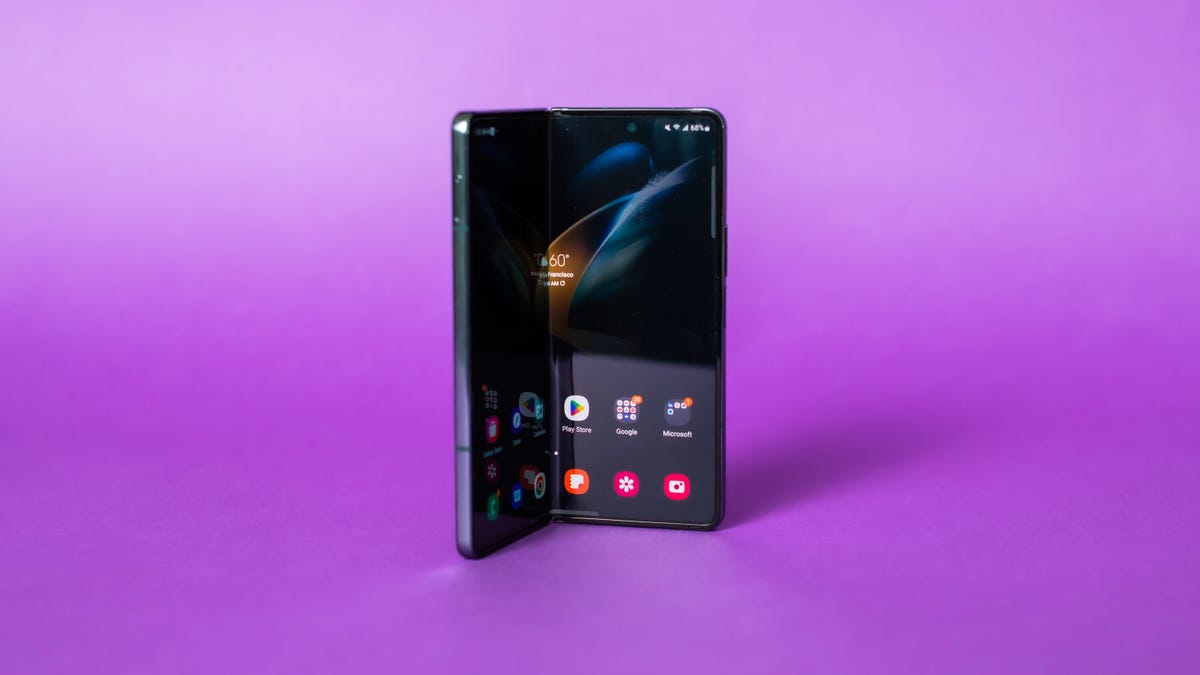
Advertiser Disclosure
Samsung’s next foldable phone could be right around the corner. If the smartphone maker maintains its typical product launch cycle, we could see another new version of Samsung’s book-style foldable phone around the August time frame. A recent report suggests it could arrive even earlier than usual.
Rumors indicate Samsung’s next foldable, expected to be called the Galaxy Z Fold 5, will be a minor update to the Galaxy Z Fold 4. Among the biggest changes is expected to be a redesigned hinge that should reduce the device’s thickness. But, of course, we won’t know for certain until Samsung makes an announcement.
Still, the rumors pointing to routine changes like a thinner build suggest Samsung is still fine-tuning the Galaxy Z Fold’s design. Each year, Samsung has implemented modest but useful changes to the Z Fold’s physique that make it more palatable. With the Galaxy Z Fold 4, for example, Samsung increased the cover display’s width, a small change that makes it feel a bit more like a regular phone when closed. But the Z Fold 4 is still notably girthy when folded compared to a standard phone, showing there’s still work to be done.
Samsung will also have more competition this year now that Google has introduced its first foldable phone, the Pixel Fold, which ships in June.
Here’s what we know about the Galaxy Z Fold 5 so far based on rumors and historical Samsung product launches.
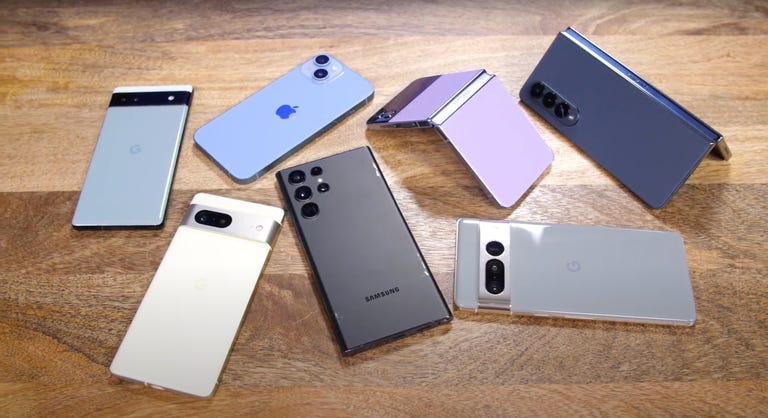
07:28
Galaxy Z Fold 5 release date
Samsung typically releases new foldable phones in August. The Galaxy Z Fold 4, for example, was announced on Aug. 10 and went on sale Aug. 26. Before that, the Galaxy Z Fold 3 hit store shelves on Aug. 27 in 2021.
Samsung seems to have built a tradition around launching its foldable phones in August, and it seems likely the company might do the same this year. Plus, it gives Samsung an opportunity to generate buzz around its own products heading into the fall, which is when Apple and Google typically unveil their new smartphones.
However, Korean news outlet Chosun reports that Samsung will introduce its new foldable phones earlier than usual on July 26 in South Korea.
Galaxy Z Fold 5 price
Samsung’s tablet-style foldable doesn’t come cheap. The Galaxy Z Fold 4 starts at $1,800 without a trade-in. That’s certainly cheaper than Samsung’s original Galaxy Fold, but it’s still considerably more expensive than your average phone. It’s also the same price as Google’s recently announced Pixel Fold.
We haven’t heard much about the Galaxy Z Fold 5’s price when it comes to leaks and rumors. But TM Roh, president and head of Samsung’s mobile experience division, acknowledged when speaking with CNET last August that pricing is a challenge.
«It’s definitely a challenge that we are tackling, and we will need to tackle,» he said.
Galaxy Z Fold 5 design
If the rumors turn out to be true, Samsung may make some design refinements to the Galaxy Z Fold 5. Korean news outlets The Elec and ET News, as well as prolific leaker Ice Universe, have reported that Samsung will implement a new water drop-shaped hinge for the Galaxy Z Fold 5. This could result in a less noticeable crease and a slimmer profile when closed, similar to the Oppo Find N, which has this hinge style. The biggest benefit would be that the phone folds completely shut with no gaps, making it feel more sleek when being used as a normal phone.
That would be a much-appreciated improvement, considering one of the Galaxy Z Fold 4’s biggest drawbacks is that it still feels chunky when folded. Competitors like Oppo and Huawei have also done a better job at hiding the crease, as my colleagues Sareena Dayaram and Eli Blumenthal have written, so this new hinge could help Samsung catch up.
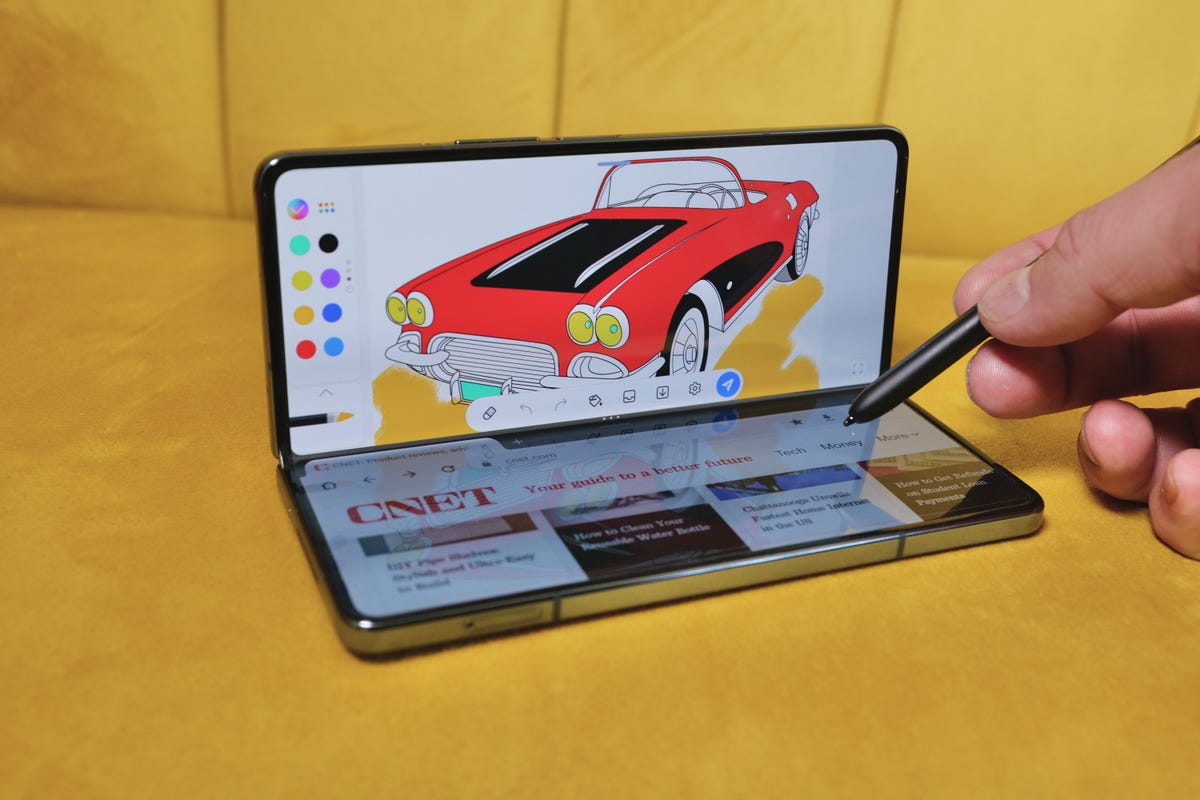
Samsung’s Galaxy Z Fold 4.
Galaxy Z Fold 5 S Pen
Samsung’s book-style foldable has supported the S Pen since the Galaxy Z Fold 3, so it seems likely that the Galaxy Z Fold 5 will as well. The question, however, is whether you’ll be able to store it within the device as you can with the Galaxy S23 Ultra.
ET News reported that the Galaxy Z Fold 5 will not include a storage slot for the S Pen. There’s less room for S Pen storage since the hinge structure has changed, the report said citing a person close to the issue.
However, a previous report from The Elec said Samsung cited adding a designated slot for the S Pen as a challenge that it believes needs to be overcome to further popularize foldable phones. This suggested that Samsung was indeed considering adding an S Pen holster to its next foldable.
Embedding the S Pen in the Galaxy Z Fold 5 could make it more useful as a productivity device, further defining who that product is truly for. But doing so while reducing the device’s thickness is certainly a challenge. One solution could be to create a magnetic mechanism for attaching the pen to the Z Fold 5, similar to the way the Apple Pencil attaches to the iPad.
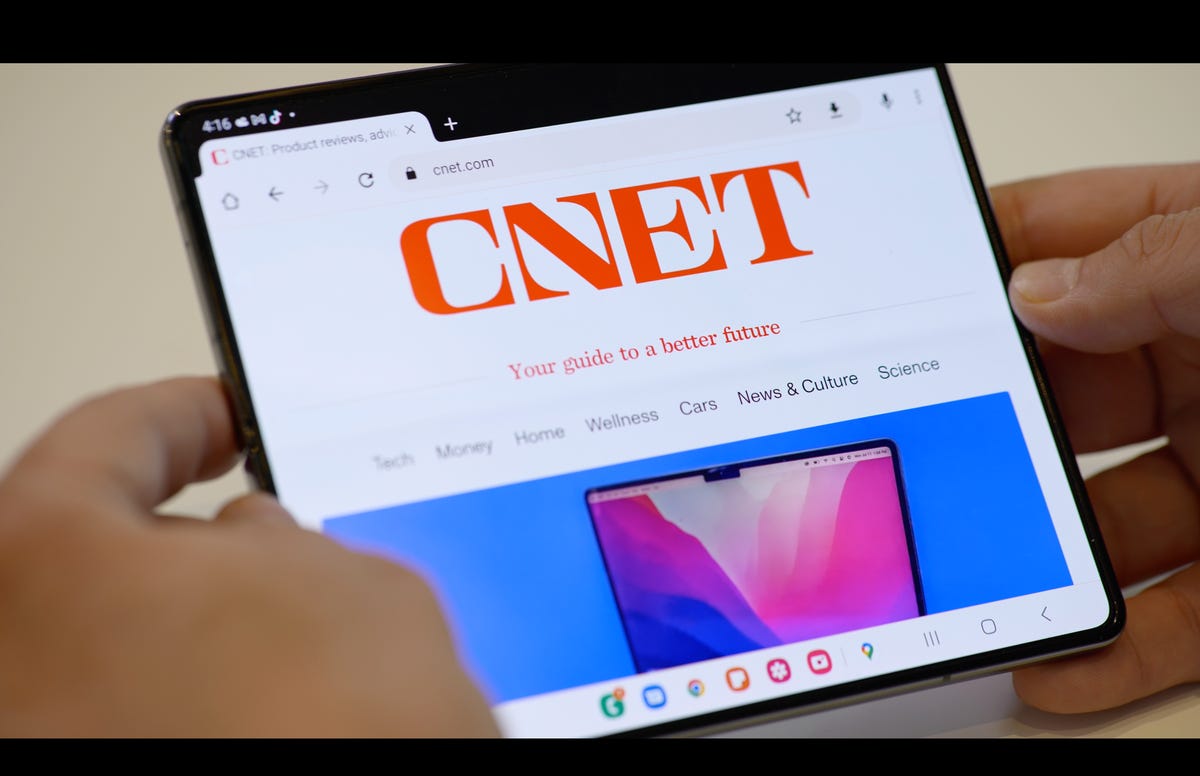
The Galaxy Z Fold 4’s screen when unfolded.
Galaxy Z Fold 5 storage and other specs
The Galaxy Z Fold 5 will likely have some specifications in common with the Galaxy S23 lineup. The phone may be available in 256GB, 512GB and 1TB storage options, just like the Galaxy S23 Ultra, according to Sam Mobile.
It’ll also likely run on Qualcomm’s Snapdragon 8 Gen 2 processor, according to The Elec, just like the Galaxy S23 family. Samsung optimized the version of the chip that’s inside its latest flagship phones, so it’s possible it will do the same for its next foldables.
We haven’t heard many rumors about the camera yet, but The Elec reports it could have a 12-megapixel selfie camera and a triple-lens rear camera with a 50-megapixel main camera. The Galaxy Z Fold 4 also has a 50-megapixel main camera, so it sounds like we won’t be seeing too much of an upgrade there. But if it does have the new Samsung-optimized edition of the Snapdragon 8 Gen 2, we may see some of the behind-the-scenes improvements to image processing that arrived on the Galaxy S23.
The 12-megapixel front camera would also represent an upgrade from the 10-megapixel selfie camera on Galaxy Z Fold 4’s cover screen, provided that The Elec’s information is correct.
Overall, the Galaxy Z Fold 5 seems like it could be a modest improvement over the Galaxy Z Fold 4. But if the rumors turn out to be true, it’ll represent another step toward addressing some of the aesthetic compromises that come with foldable phones, like screen creases and thick designs when shut.
Technologies
Today’s NYT Mini Crossword Answers for Saturday, Dec. 27
Here are the answers for The New York Times Mini Crossword for Dec. 27.
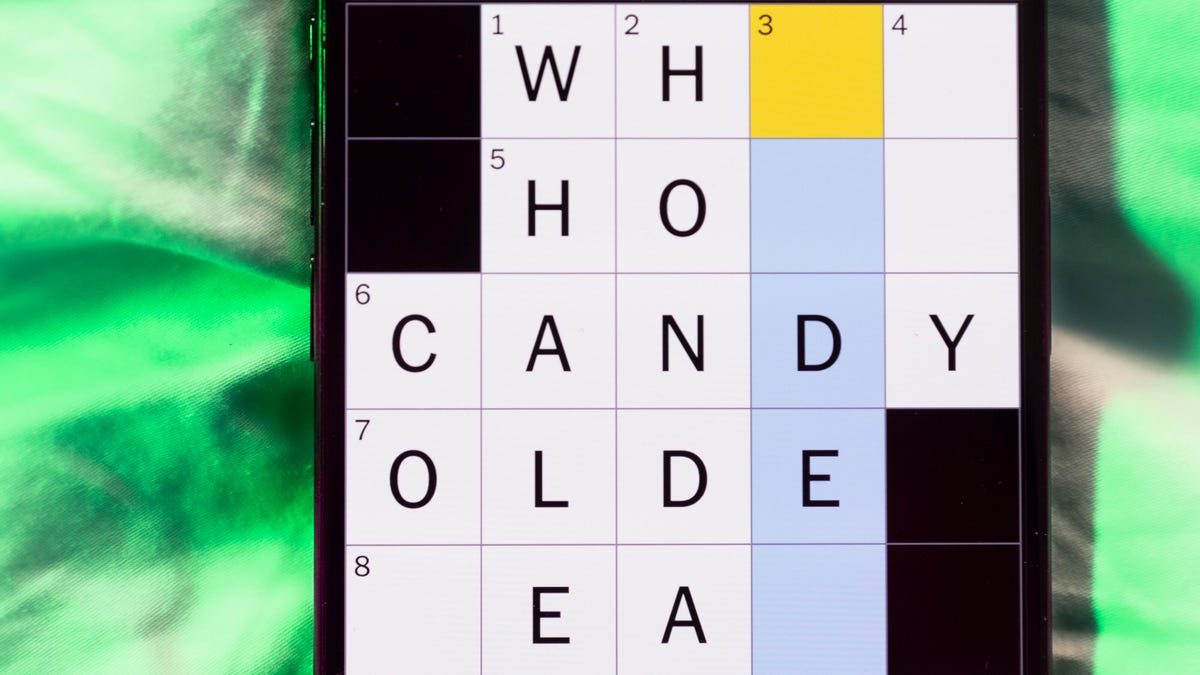
Looking for the most recent Mini Crossword answer? Click here for today’s Mini Crossword hints, as well as our daily answers and hints for The New York Times Wordle, Strands, Connections and Connections: Sports Edition puzzles.
Need some help with today’s Mini Crossword? It’s pretty long for a Mini Crossword, and some of the clues are tricky. The answer to 10-Across is not an expression I use, for sure. Read on. And if you could use some hints and guidance for daily solving, check out our Mini Crossword tips.
If you’re looking for today’s Wordle, Connections, Connections: Sports Edition and Strands answers, you can visit CNET’s NYT puzzle hints page.
Read more: Tips and Tricks for Solving The New York Times Mini Crossword
Let’s get to those Mini Crossword clues and answers.
Mini across clues and answers
1A clue: Fashionable
Answer: HIP
4A clue: Product sold on «The Office»
Answer: PAPER
6A clue: One writing a performance review
Answer: MANAGER
8A clue: With 5-Down, redundant synonym of «outcome»
Answer: END
9A clue: Quiet ___ mouse
Answer: ASA
10A clue: Gives constant compliments, in slang
Answer: GASESUP
12A clue: Ski mountain bump
Answer: MOGUL
13A clue: Uneasy feeling
Answer: ANGST
Mini down clues and answers
1D clue: Personally involved
Answer: HANDSON
2D clue: Hoppy beer, for short
Answer: IPA
3D clue: Mythical horse whose name is an anagram of 10-Across
Answer: PEGASUS
4D clue: Last word in the palindromic sentence «A man, a plan, a canal …»
Answer: PANAMA
5D clue: See 8-Across
Answer: RESULT
6D clue: Ryan of «When Harry Met Sally …»
Answer: MEG
7D clue: Genre for Playboi Carti and Cardi B
Answer: RAP
11D clue: Something in an Easter basket
Answer: EGG
Don’t miss any of our unbiased tech content and lab-based reviews. Add CNET as a preferred Google source.
Technologies
Today’s NYT Connections: Sports Edition Hints and Answers for Dec. 27, #460
Here are hints and the answers for the NYT Connections: Sports Edition puzzle for Dec. 27, No. 460.

Looking for the most recent regular Connections answers? Click here for today’s Connections hints, as well as our daily answers and hints for The New York Times Mini Crossword, Wordle and Strands puzzles.
Today’s Connections: Sports Edition is a real challenge. That purple category wants you to hunt out something related in four different words, and it’s a toughie. If you’re struggling with today’s puzzle but still want to solve it, read on for hints and the answers.
Connections: Sports Edition is published by The Athletic, the subscription-based sports journalism site owned by The Times. It doesn’t appear in the NYT Games app, but it does in The Athletic’s own app. Or you can play it for free online.
Read more: NYT Connections: Sports Edition Puzzle Comes Out of Beta
Hints for today’s Connections: Sports Edition groups
Here are four hints for the groupings in today’s Connections: Sports Edition puzzle, ranked from the easiest yellow group to the tough (and sometimes bizarre) purple group.
Yellow group hint: Something you save.
Green group hint: An Olympic sport.
Blue group hint: Toronto pitchers.
Purple group hint: Think about the alphabet and look for something hidden.
Answers for today’s Connections: Sports Edition groups
Yellow group: Memento.
Green group: Types of wrestling.
Blue group: Blue Jays to win Cy Young Award.
Purple group: Ends in a homophone for a letter of the alphabet.
Read more: Wordle Cheat Sheet: Here Are the Most Popular Letters Used in English Words
What are today’s Connections: Sports Edition answers?
The yellow words in today’s Connections
The theme is memento. The four answers are collectible, keepsake, memorabilia and souvenir.
The green words in today’s Connections
The theme is types of wrestling. The four answers are arm, freestyle, Greco-Roman and sumo.
The blue words in today’s Connections
The theme is Blue Jays to win Cy Young Award. The four answers are Clemens, Halladay, Hentgen and Ray.
The purple words in today’s Connections
The theme is ends in a homophone for a letter of the alphabet. The four answers are batter’s eye (I), blue jay (J), golf tee (T) and pool cue (Q).
Don’t miss any of our unbiased tech content and lab-based reviews. Add CNET as a preferred Google source.
Technologies
Today’s Wordle Hints, Answer and Help for Dec. 27, #1,652
Here are hints and the answer for today’s Wordle for Dec. 27, No. 1,652.

Looking for the most recent Wordle answer? Click here for today’s Wordle hints, as well as our daily answers and hints for The New York Times Mini Crossword, Connections, Connections: Sports Edition and Strands puzzles.
Today’s Wordle puzzle came together pretty quickly for me this time. If you need a new starter word, check out our list of which letters show up the most in English words. If you need hints and the answer, read on.
Read more: New Study Reveals Wordle’s Top 10 Toughest Words of 2025
Today’s Wordle hints
Before we show you today’s Wordle answer, we’ll give you some hints. If you don’t want a spoiler, look away now.
Wordle hint No. 1: Repeats
Today’s Wordle answer has no repeated letters.
Wordle hint No. 2: Vowels
Today’s Wordle answer has one vowel.
Wordle hint No. 3: First letter
Today’s Wordle answer begins with B.
Wordle hint No. 4: Last letter
Today’s Wordle answer ends with H.
Wordle hint No. 5: Meaning
Today’s Wordle answer can refer to a quantity of goods produced at one time.
TODAY’S WORDLE ANSWER
Today’s Wordle answer is BATCH.
Yesterday’s Wordle answer
Yesterday’s Wordle answer, Dec. 26, No. 1651 was SPEED.
Recent Wordle answers
Dec. 22, No. 1647: CONCH
Dec. 23, No. 1648: GLINT
Dec. 24, No. 1649: SPOOL
Dec. 25, No. 1650: PRISM
Don’t miss any of our unbiased tech content and lab-based reviews. Add CNET as a preferred Google source.
-

 Technologies3 года ago
Technologies3 года agoTech Companies Need to Be Held Accountable for Security, Experts Say
-

 Technologies3 года ago
Technologies3 года agoBest Handheld Game Console in 2023
-

 Technologies3 года ago
Technologies3 года agoTighten Up Your VR Game With the Best Head Straps for Quest 2
-

 Technologies4 года ago
Technologies4 года agoBlack Friday 2021: The best deals on TVs, headphones, kitchenware, and more
-

 Technologies4 года ago
Technologies4 года agoVerum, Wickr and Threema: next generation secured messengers
-

 Technologies4 года ago
Technologies4 года agoGoogle to require vaccinations as Silicon Valley rethinks return-to-office policies
-

 Technologies4 года ago
Technologies4 года agoOlivia Harlan Dekker for Verum Messenger
-

 Technologies4 года ago
Technologies4 года agoiPhone 13 event: How to watch Apple’s big announcement tomorrow
